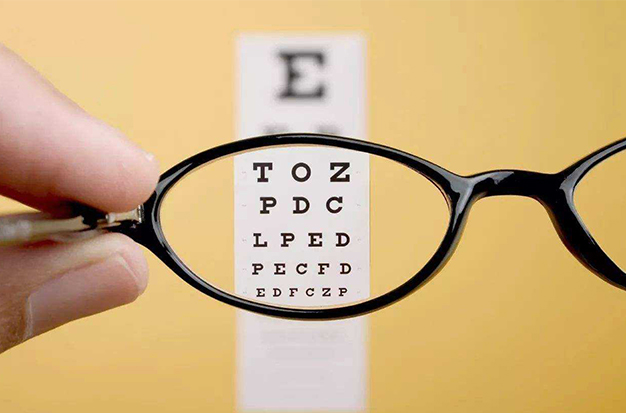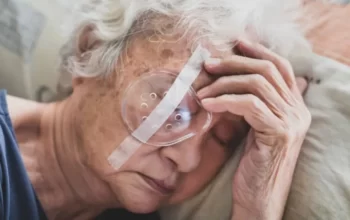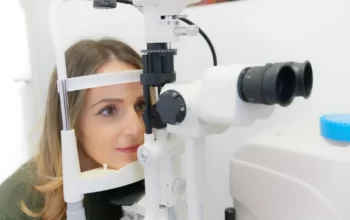
Does myopia get worse with age? As people get older, it’s typical for their vision to change. This may result from the onset of different eye conditions, the development of cataracts, or the worsening of pre-existing eye conditions. Myopia is one of these vision problems.
Myopia will be discussed, along with its effects on you and how your age relates to it. For managing myopia as you age, modern optometry offers a variety of options. Regular eye exams every year are the best way to spot changes in your vision.
A change in your myopia could affect your prescription. Eye exams give you the most recent data on your visual acuity and check for diseases. Make an appointment with your eye doctor right away if it has been a while since your last examination.
What Is Myopia?
Myopia is an eye condition where the eyeball lengthens excessively, causing light to focus behind the retina rather than directly on it. Distanced objects become hazy as a result.
The eye grows and elongates along with the body, so it is only natural that it stops growing in early adulthood when the rest of the body stops growing. This implies that a child may go through growth spurts at different points in their development, necessitating a sudden increase in the prescription.
Myopia typically begins in childhood and worsens throughout the years of schooling before stabilizing in late adolescence.
Myopia has a variety of causes, many of which are still unknown to science, but we do know that genetics and certain environmental factors play a significant role in its onset and progression.
What Is High Myopia?
When the eyeball grows too much, a severe eye condition called high myopia develops. From front to back, the eyeball grows longer than usual. It is challenging to see distant objects because of this growth. In addition to cataracts, glaucoma, and detached retina, high myopia can increase the risk of developing other eye diseases.
What Signs Of Myopia Are There?
Focusing on things that are far away is one of the main symptoms of myopia. You may be nearsighted if you have trouble focusing on a whiteboard at work or school or seeing your TV clearly. Having trouble recognizing faces from a distance and having trouble reading street signs while driving are other warning signs.
Even if you have a prescription for myopia and have been diagnosed with the condition, your vision may deteriorate over time as your eye changes. During your annual eye exam, your optometrist will test your visual acuity to see if myopia is present and determine whether it is.
The following warning signs typically appear in children who are in their school years.
- Headaches
- Excessive tearing
- Holding objects closer to the face to see
- Eye rubbing
- Squinting
- Eye strain
- Moving closer to the TV or screen to see
- Difficulty reading the board at school
Myopia & Age
Compared to adults, more children receive the initial diagnosis of myopia. Myopia typically worsens through childhood and adolescence as eye development keeps pace with growth. Myopia usually stabilizes in the early 20s, but due to increased screen time, this stability is frequently not noticed until later in life.
Myopia develops differently, either slowly or quickly, and differs from person to person. The majority of eye changes typically don’t occur until around the age of 40 after the eyes’ development is finished in your twenties. Later in life, nearsightedness and sudden changes in vision can be signs of other eye conditions.
The following conditions and high myopia are more likely to develop later in life in younger children who have been diagnosed with myopia:
- Glaucoma
- Retinal detachment / retinal tears
- Macular degeneration
- Myopic Maculopathy
- because of poor health and high refractive error, one cannot undergo refractive corrective surgeries like Lasik.
Myopia Through The Lifespan
Myopia frequently develops in childhood. According to studies, myopia gets worse later in life the earlier it develops. Myopia among children is on the rise, and it has been hypothesized that lifestyle choices like:
- Time spent studying
- Time spent indoors vs outdoors
- Time spent doing near work
Myopia can be identified during your child’s eye exam and treated with myopia control.
Early adulthood is when myopia usually stabilizes. Patients with myopia might find that by the time they are in their early 20s, their vision has stabilized. Some individuals might mistake this for their myopia getting better with age. It is more likely that a halt in the eye’s growth is what caused the stabilization.
Once they turn 40, some people experience changes in their myopia, but they’re typically not for the better. According to research, older myopic patients typically have worse vision outcomes.
Myopia has been known to worsen in people over the age of 40 or 50, though. Unfortunately, rather than myopia decreasing, this usually has more to do with the onset of presbyopia or the development of cataracts. It’s possible to mistake a worsening of hyperopia (or farsightedness) for a decrease in myopia, but this is only a sign of another vision issue.
Avoid putting your eyes at risk in the vain hope that your myopia will get better with age. Visit your optometrist to learn about your myopia correction options.

Why Should Parents Be Concerned About Myopia Progression?
Children who are myopic have a higher chance of later developing sight-threatening conditions like glaucoma, cataracts, retinal detachment, and macular degeneration.
These diseases are even more likely to affect children who have myopia that is progressing quickly.
So why put off getting your child treated until their myopia gets worse? Early myopia reduction can have a significant impact on your child’s future eye health.
Actually, a startling statistic about the development of myopia was discovered in a study that was published in the Journal of Optometry and Vision Science, and all parents need to be aware of it. A child’s risk of developing myopic maculopathy (myopic macular degeneration), the leading cause of irreversible visual impairment and blindness, increased by 67% with every diopter change in their prescription, according to the researchers.
The same study found that myopic maculopathy risk decreased by 40% when parents helped manage their children’s myopia.
Myopia Treatments
While there is no cure for myopia, there are several options available for correcting the condition. Recent developments in optometry suggest that specialized eyewear may be able to slow the progression of myopia. Your options for managing your myopia should be discussed with your optometrist.
Contact Lenses
Additionally, nearsightedness can be treated with contact lenses. You might need specialty contacts, depending on the seriousness of your diagnosis. Finding the right brand and fit that corrects your myopia without compromising the comfort of your eyes requires a contact lens exam and fitting.
Orthokeratology, also known as “Ortho-k,” is the practice of using specially designed contact lenses to reshape the cornea and lessen the effects of myopia. These lenses are typically worn at night, which frees you up from wearing contacts during the day. As long as the lenses are worn regularly, vision improvement can happen.
The progression of myopia in children is slowed down by MiSight contact lenses. Utilizing a lens-based system, they deceive the eye into not developing abnormally by rerouting light into the eye. Usually given to kids between the ages of 8 and 12, this myopia management option.
Corrective Eyeglasses
The oldest and best method of myopia treatment is still effective! You might need to wear glasses all the time or just in certain circumstances, depending on how severe your myopia is. Thanks to advancements in lens technology, myopia-correcting lenses can be inserted into almost any frame or pair of glasses.
Laser Eye Surgery
One more option for treating myopia is through surgery. This covers LASIK, PRK, and other laser treatments that modify the shape of your cornea with highly focused lasers. By altering how light enters the eye, laser surgery can treat myopia. To find out if you qualify for this effective myopia treatment option, schedule a laser eye surgery consultation.
Conclusion
Many of us will receive a myopia diagnosis when we are children or teenagers. Up until the age of 20, when most people’s vision stabilizes, the degree of nearsightedness can vary significantly. There are some exceptions, but there are also a number of ways to manage myopia for different age groups. The best way to treat a refractive error is with an optometrist who can give you an accurate, current prescription. You should schedule your next eye exam to ensure that your myopia is not getting worse and that you are seeing as clearly as possible.



